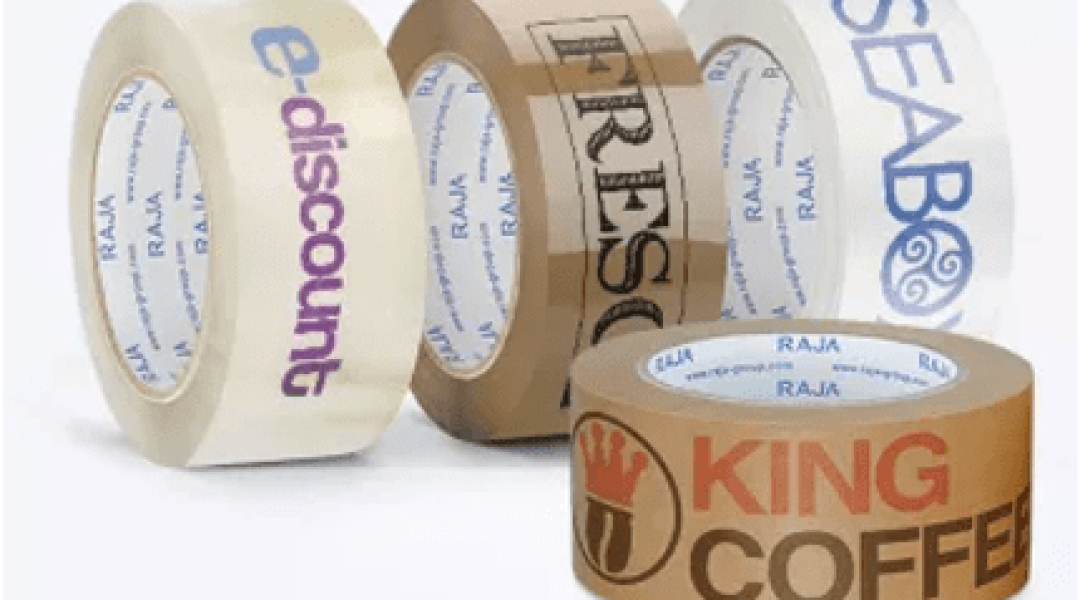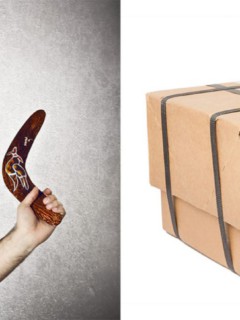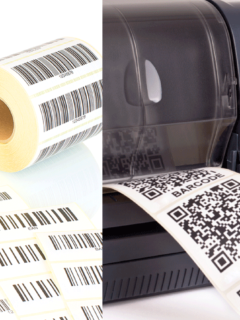Shipping sports equipment can be a heavy task in the truest sense of the word, causing more or less problems. Much depends on the weight and size of the equipment: Bicycle, snowboard, punching bag or exercise bike – how do you succeed in shipping such bulky and heavy items? A few concrete tips on the subject of shipping sports equipment
How do I send sports equipment by courier?
Point 1: Select a box
To send sports equipment safely and smoothly by courier, care should be taken to ensure that it is properly packed and protected. A cardboard box made of stable and durable corrugated cardboard, preferably 2 flute (equivalent to 5 layers of cardboard) or 3 flute (equivalent to 7 layers of cardboard) is required.
carton + flute + carton + flute + carton + flute + carton = 7
In Germany we speak of a 3-ply carton, whereas in Poland, for example, the carton layers are counted: There we talk about 5-ply carton (2 flute) or 7-ply carton (3 flute)
To ensure safe shipping, the shape and size of the box must match the sports equipment – so that the skis or bike do not protrude over the edge or corner.
Point 2: Select a supplier
A shipment of sports equipment needs to be measured and weighed so that it can be placed in the appropriate price category at the carrier. It is likely to be classified as a non-standard shipment. This is more expensive but guarantees that the sorting staff and couriers will handle the parcel with the utmost care. Appropriate transport and shipping labelling also helps to draw attention to the “special needs” of the goods in transit.The homepages of the forwarding agents provide further information on shipping requirements and transport costs, and most providers also offer a transport cost calculator directly, depending on the following factors:
These factors influence the transport costs:
– The transport distance: For most providers, this is made up of fixed costs plus the distance covered in kilometres. This means that short journeys are relatively expensive, depending on the fixed cost base.
– The goods to be transported: Palletised goods in standard dimensions? Bulky goods? Or even hazardous goods? Dimensions? Weight?
– The type of transport or transport duration: Should it be delivered directly? Or is a groupage (where the transport service provider “collects” goods from several customers on a route that is usually not direct, i.e. there are several loading and unloading points) also possible?
Point 3: Secure box with sports equipment
The next step is to secure the valuable contents properly. This includes padding – there must be a few centimetres of free space between the walls of the box and the sports equipment, which is filled with padding material. This includes bubble wrap, bubble paper, packing chips, air cushions, crumple paper and polyethylene foam.
Filling the box with sports equipment is a very important step. The shipment must not be movable inside, otherwise there is a high chance that some parts could fall or shift during the shipment of the sports equipment, damaging the equipment and the box. The packed and filled box should also be wrapped in stretch film, which protects the contents from moisture, dust, dirt and mechanical damage (find out about the use and type of stretch film). Do not forget the warning labels (e.g. “Top/Bottom”), which inform the courier that there are valuable and precious items or equipment inside.
Concrete tips for shipping sports items:
How do I pack my skis, snowboard or bike?
Regardless of the type of equipment, all sports equipment should be cleaned and protected before packing. Check the hold of the binding. In the case of skis or a snowboard, the binding should be attached so that it adheres securely and does not lift off the main part. Then secure and wrap possible tips and corners of the winter sports equipment with bubble wrap – this protects the fragile and delicate parts that could easily be damaged during transport. Off into a suitable, long cardboard box….
It’s a similar story with a bicycle. Before it is packed, it should be cleaned and dry (!). Then it can be carefully disassembled. It is best to remove all parts that are not firmly attached to the frame, such as the bicycle saddle, pedals, lights, luggage rack, bell, air pump, bottle cage, etc., and wrap each part individually with bubble wrap or paper. Pack the small parts secured in this way in an extra box, which you can either send separately or place in a suitable position in the bicycle box (Attention: Nothing should be able to move here afterwards: Fix and pad it).
Don’t forget the small parts (screws, nuts). Store them in separate bags, e.g. pressure seal bags, and attach them later with some tape at the appropriate place on the frame. For easy allocation you can label the bags, this works with a sharpie or similar on each bag, but very easily on pressure seal bags with a labelling field.
Remove the pedals (apply a spanner and crank the pedals in the direction of pedalling), wrap them with padding material and place them in a suitable box.
Remove the front wheel and attach it to the frame (with Velcro tape, cable ties, insulating tape or other easily removable tape that does not leave any residue).
Position the handlebars crosswise. To do this, turn it loosely using the appropriate Allen key (4 or 5) and turn it along the direction of travel. Wrap the handlebars with bubble wrap, again use tape to secure.
For the tyres, it can help to deflate them a little (halfway). This will protect the tubes from unnecessary damage.
Shipping bulky sports equipment
Sports equipment also includes equipment used in the gym, e.g. bicycle, treadmill, stepper. Before you pack them in a box, you should prepare accordingly. First, disassemble the equipment. Wrap each dismantled part with strong protection, e.g. bubble wrap. Also switch off all measuring devices (e.g. the meter). Pack the whole thing in a large, sturdy, strong cardboard box, again we recommend 3-wall boxes. You can stick the disassembled, packed parts to the unit with adhesive tape – this way they won’t get lost during transport. Don’t forget to label screws and the like!Are you sending particularly heavy sports equipment?
Heavy sports equipment and accessories (e.g. dumbbells, a set of weight plates, barbells) can also be sent by courier. The only important thing is that the whole thing does not exceed the maximum package weight specified by the carrier. If the parcel with the sports equipment in question is heavier, it may be classified as a non-“normal” consignment. In this case, contact the service provider and ask about the conditions for particularly heavy consignments. Also note: Some courier services stipulate that if the parcel is very heavy, the courier will need the recipient’s help to bring it to the flat or house. “Delivery free kerbside”, for example, provides for the courier to drop off the goods at the recipient’s address at the roadside – transport to and into the house or warehouse is then the responsibility of the recipient.Shipping sporting goods by freight forwarder? The shipping parameters:
The choice of the best transport service provider depends on the size and weight of the package. It does not have to be in the shape of a standard parcel (rectangular, cardboard box) – because of the different weights, courier equipment is often treated as a non-standard courier shipment. If the goods also have to reach their destination quickly, it is best to send them by courier, i.e. individually by direct transport.Every carrier has different parameters – some do not accept parcels that exceed certain dimensions and weights. Therefore, check explicitly with the respective forwarder which restrictions apply. Comparison portals with shipping cost calculators such as jumingo make the comparison easier – but it is always worth asking the forwarding agent or courier service personally.
















